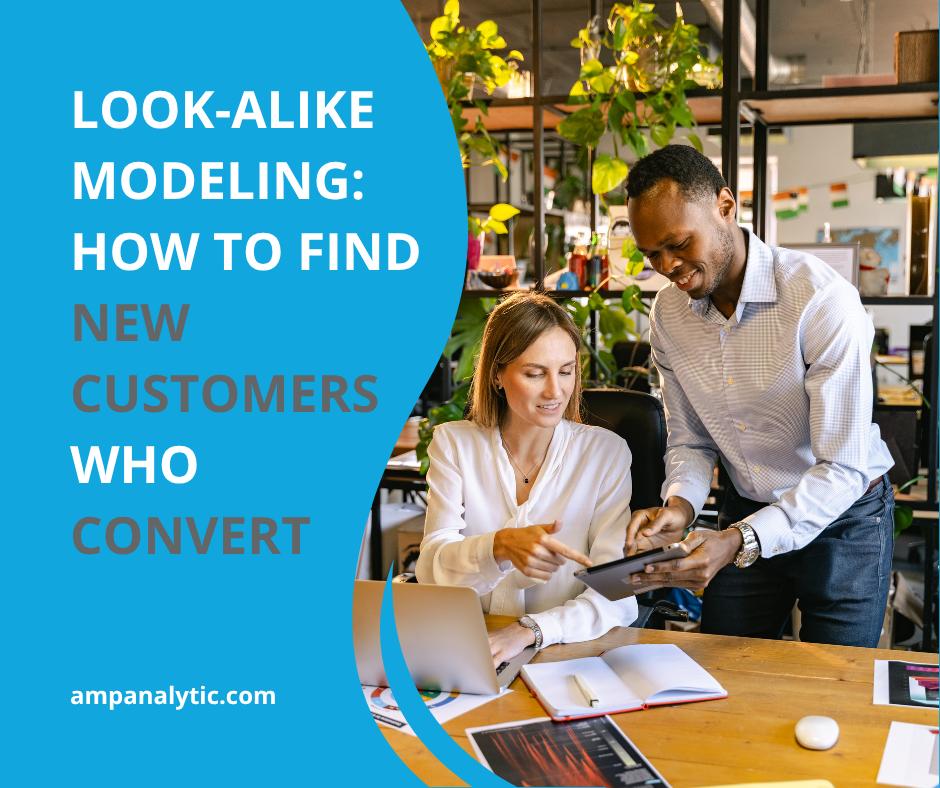
Finding new customers is getting more expensive and more competitive, especially as audiences become saturated and marketing costs rise. That’s why smart brands are shifting away from broad-based targeting and embracing precision growth strategies that focus on finding more people who look and act like their best customers. This approach is called look-alike modeling, and when it’s done right, it becomes one of the most reliable ways to scale your business efficiently and profitably.
At its core, look-alike modeling identifies the traits, behaviors, and buying patterns of your current best customers, then uses that intelligence to locate similar audiences in your current market or in brand-new territories with high potential.
However, many companies rely solely on platform-generated look-alike audiences from sources like Meta, Google, or programmatic ad tools. While these can help, they aren’t built to deeply understand your customer base. They are built to keep you spending on ads.
True look-alike modeling goes deeper, making your marketing smarter, leaner, and stronger over time. Let’s look at how it works and why it matters.
Why Look-alike Modeling Matters
Look-alike modeling helps you:
- Expand your market intelligently
- Grow faster without wasting budget
- Identify untapped high-value geographic areas
- Increase conversion rates and lifetime value
- Reduce acquisition cost by targeting people who behave like your best customers
Instead of guessing or broad-targeting, your growth plan becomes data-driven and actionable.
Turning Your Customer Data into a Growth Blueprint
Most marketing tools only see surface-level data like demographics, location, device type, or online behavior. Modern look-alike modeling goes much deeper. This methodology includes:
1. Analyzing Your Customers
Before you can find prospects, you need to know who your current customers are. Who are the raving fans and loyal clients. It’s important to identify who keeps coming back verses who makes a one-time purchase. A strong model will evaluate:
- Frequency of purchase
- Total lifetime value
- Product mix or service type
- Engagement and retention
- Buying triggers and pathways
Analyzing this information creates a realistic picture of who fuels your business and not just who fills your email list.
2. Layer Behavioral and Market Data
Next, you enhance your internal data with external insights such as:
- Demographics and lifestyle data
- Household income & spending behavior
- Geographic & mobility patterns
- Market saturation & competitive density
- Psychographic traits (values, motivations, attitudes)
This additional information will create a rich customer profile and remove guesswork.
3. Score & Segment for Precision
Customers are scored by the model to identify which traits matter most for conversion and loyalty. This information helps you score prospect audiences and categorize them like:
- Core Look-alikes: Most similar, highest conversion potential
- Extended Look-alikes: Strong match, ideal for testing and expansion
- Exploratory Audience: Looser match for emerging opportunities
- Not a good fit: Least likely to purchase from you – can be trimmed from your audience
This ensures you scale strategically, not blindly.
4. Find New Markets that Match
One of the biggest advantages is identifying new locations that resemble your top-performing markets. Instead of opening stores or launching campaigns elsewhere, you prioritize the places most likely to succeed. It enables you to grow smarter with less risk.
5. Activate Across Channels
Finally, the model feeds into your media strategy, so you can deploy look-alike audiences across different marketing channels such as:
- Direct Mail
- Paid Social
- Search Ads
- Email & Marketing Automation
- Streaming Media
- Out-of-home & Geofencing
Because you have access to the model – not a platform – it becomes an ongoing strategic asset. You can feed responders back into the model to refine it, and you know exactly who you are targeting. It’s not a hidden audience.
The Payoff: Higher ROI, Lower Waste, Faster Growth
Look-alike modeling transforms your marketing from reactive to proactive. When companies adopt this approach, they see:
- Higher conversion rates
- Lower cost per acquisition
- Better targeting accuracy
- Smarter market expansion
- Compounding efficiency over time
Simply put: you spend less to reach more of the right customers.
Ready to Grow Smarter?
Look-alike modeling helps you step confidently into your next growth phase.
If you’re ready to:
- Grow without wasting budget
- Enter new markets with confidence
- Find customers who convert and stay
Then it’s time to put your data to work. Interested in building a customized look-alike model for your business? Schedule a discovery call with us and let’s get started.
